Eight million Americans who earn more than $100,000 a year live paycheck to paycheck
>
Nearly two-thirds of Americans now say they live paycheck to paycheck, according to a new survey, and nearly five percent of those who struggle make more than $100,000 a year.
As inflation continues to bite — the December Consumer Price Index showed that the all-items index rose 6.5 percent, before seasonally adjusted, over the past 12 months — the number of those feel affected continues to increase.
Of 4,000 people surveyed by industry publication Pymnts.com and LendingClub between December 8 and December 23, a total of 64 percent said they were living paycheck to paycheck.
That means 166 million Americans can’t save any money at the end of the month.
And of those 166 million, 8 million, almost 5 percent, earned more than $100,000 a year. The total figure represents an increase of 9 percent over last year.
The average American earns $58,260 a year, according to the Work Office Statistics.
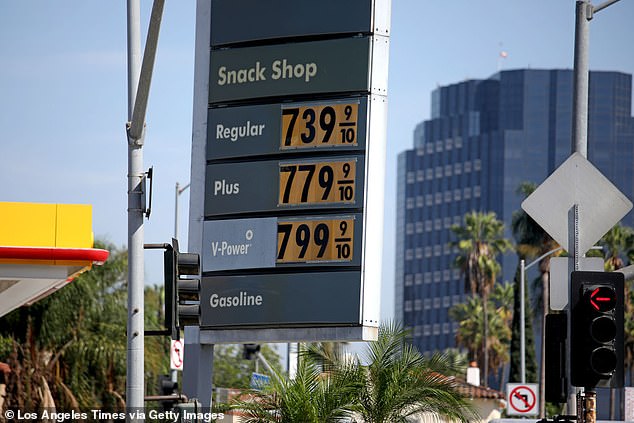
High energy prices have bitten into family budgets. A gas station in Los Angeles is seen in September
“The outlook for consumer spending is cloudy,” said Lydia Boussour, a senior economist at EY Parthenon.
‘High prices, eroded personal savings and increased reliance on credit point to weak consumer spending this winter.
“This dynamic will be exacerbated by the negative effects on wealth of lower stock prices and declining home values.”
Respondents also reported problems paying their bills.
Nearly one in four, 24 percent, said they had trouble paying their bills in December.
Among those making more than $100,000 and living paycheck to paycheck, the proportion rose to 16 percent, from 11 percent the year before.

Lydia Boussour, a senior economist at EY Parthenon, warned that the situation was unlikely to improve in the near future.
The steepest rise in costs over the past 12 months has been for energy: fuel oil is up a whopping 41.5 percent, year-over-year, according to the Work Office Statistics.
Increases in food prices have also hit families hard.
They slowed in December but still rose uncomfortably fast at 10.4 percent over a year earlier, federal data shows.
Dallas, the Twin Cities and Baltimore are experiencing some of the highest rates of inflation in the country in food prices, which rose 14.1%, 13.7% and 13.5% in those cities, respectively. , according to a Axios analysis.
By comparison, food prices rose just 7 percent in Washington DC, 7.7 percent in Chicago and 8.8 percent in Miami, according to the report.
The latest Consumer Price Index report showed that in December, grocery inflation continued to be higher than restaurant inflation, with food at home up 11.8 percent and food at home up 8, 3 percent on food outside the home.
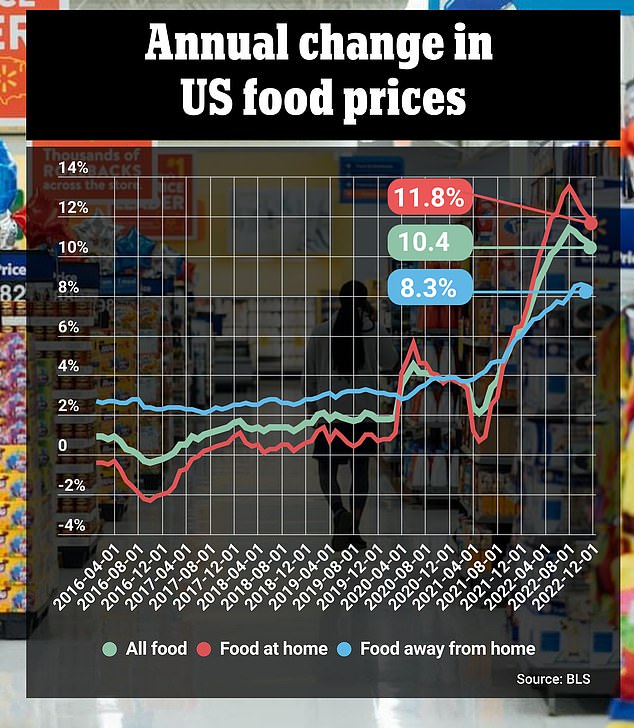
Food price increases slowed in December but still rose uncomfortably fast to 10.4% more than a year ago, federal data shows
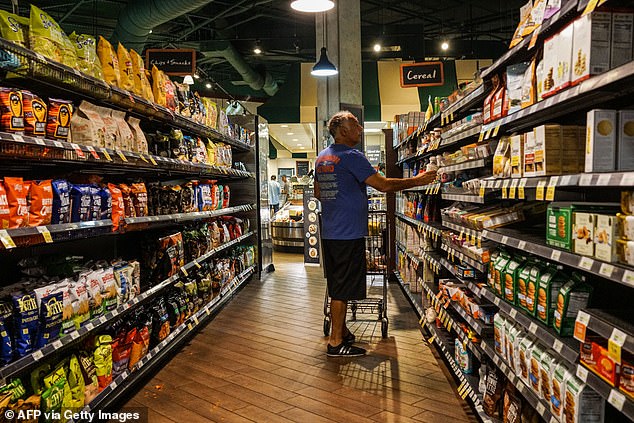
Grocery inflation continued to be higher than restaurant inflation, with food delivery up 11.8% and dining out up 8.3%
Grocery inflation rates hit a 40-year high of 13.5% in August and have eased somewhat since.
Drivers of the sharp increases are rising energy and commodity prices, due to the lingering effects of pandemic supply chain disruptions, and Russia’s invasion of Ukraine, which sent prices soaring. world wheat prices.
Additionally, an outbreak of bird flu has drastically reduced the national supply of eggs, sending prices soaring in 2022.
The national average price for a dozen Grade A large eggs soared to $4.25 in December, up nearly 140% from $1.79 a year ago, according to the Bureau of Labor Statistics.
More than 43 million of the 58 million birds culled last year to control the virus outbreak were laying hens, including some farms with more than 1 million birds each in major egg-producing states like Iowa.
Wholesale egg prices have fallen a bit in recent weeks, following increased holiday baking, though it remains to be seen how much of that relief will translate into lower consumer prices.
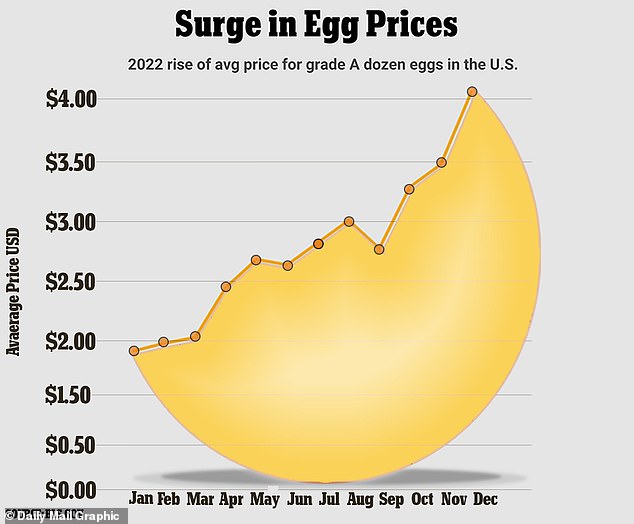
The national average price for a dozen Grade A large eggs soared to $4.25 in December, up nearly 140% from $1.79 in the same month a year earlier.

Restaurant prices also increased, although not as fast as supermarket prices.
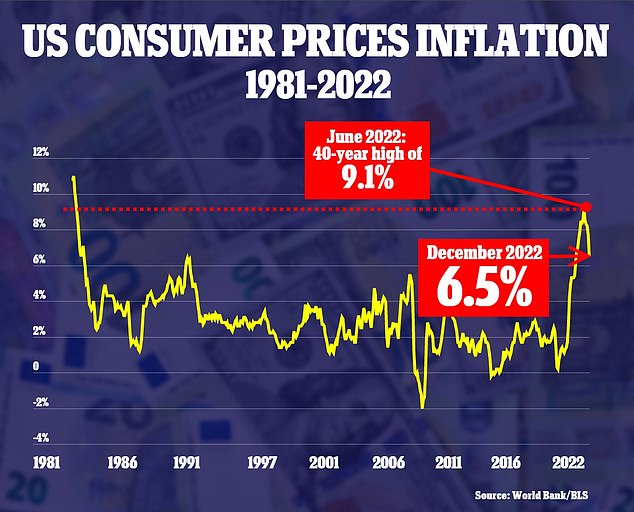
Inflation in the US slowed once again last month, rising at an annual rate of 6.5%. It marked the sixth consecutive month that the annual inflation rate has declined
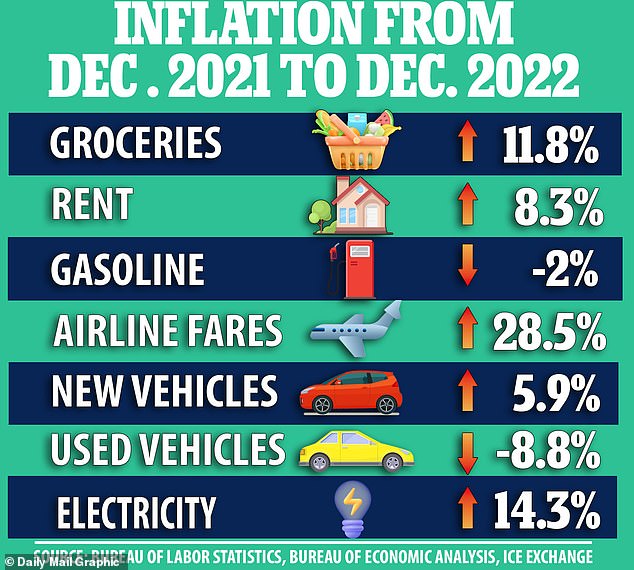
Prices for energy and many goods moderated or even fell in December, while prices for food, services and housing continued to rise at an uncomfortable pace.
December’s headline annual inflation rate of 6.5 percent marked the slowest annual pace of price increases since October 2021, and the sixth consecutive month of declining headline annual inflation rates since the June 9 peak. ,1 percent.
